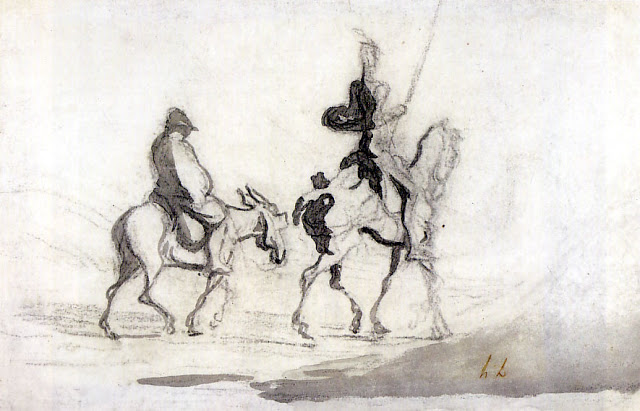The two Spains of Miguel de Cervantes and the context for Don Quixote which explains the schizophrenic nature of the character as a reflection of an imperial age coming to a dishonourable end…
Charles V abdicated the Spanish throne in 1556, retiring with two books of chivalry in his luggage to the monastery of Yuste, and three years later his son and successor, Philip II came to Spain. To contemporaries he was a poor figure, mean, jealous, and suspicious. In his reign the old liberalism of Charles V was finally crushed, the last of the old “Erasmians” burnt; the Empire was frayed at its edges and rotted at its core. But this decline was not at first apparent. For a decade, at least, after 1560, the heirs of Charles V kept his spirit alive. Particularly it lived on in Italy, away from the stuffy bigotry and waspish intrigues of the new court. There all eyes looked south and east to the great crusade which Charles V had conducted from Italy, the defence of he Mediterranean against the Turk. In 1571 the dead Emperor seemed to live again when his bastard son, Don Juan of Austria, of whom his legitimate son was so jealous, won a resounding naval victory at Lepanto and went on to occupy Tunis, ending forever the Turkish domination of the Mediterranean.

Daumier’s gaunt knight on his shambling horse, trailed by Sancho on his donkey…click image for source…
But if Lepanto echoed the imperial age, it was the last echo. In the 1570’s Don Juan was undermined by his royal brother and died, and meanwhile Spain itself was being slowly ruined by a gigantic, ill-conceived, desk-dictated policy of religious and political reaction in Northern Europe. By 1590 the new generation had grown up: a generation with no memory of the imperial days and their buoyant mood. Instead it had experienced only disillusion and defeat. For the last twenty years it had seen Spain mobilizing massive efforts which only disintegrated in humiliating disaster and squalid recrimination. All the wealth of America had been poured out in vain. The long revolt in the Netherlands was still unquenched. The Invincible Armada had been shattered. The attempt to conquer France had failed. In the years that followed the disasters pressed nearer home.

Gustave Dore and his operatic style to Don Quixote,s disastrous tilt with windmills…click image for source…
In the 1590’s there was both plague and famine in Spain. The Crown was bankrupt, the nation impoversihed. The politiical and military scadals were great and public. In 1596 an English force, under Queen Elizabeth’s Earl of Essex, actually landed in Spain and seized and sacked its greatest port, Cadiz. Two years later, after a long and terrible illness, as slow and agonizing as his reign, Philip II died, and with his son, Philip III, was enthroned the new spirit of Spain- the spirit of cynicism and disillusion, the negation of all heroism, the cult not of religious crusades but of passive, superstitious piety. ( to be continued)





 COMMENTS
COMMENTS